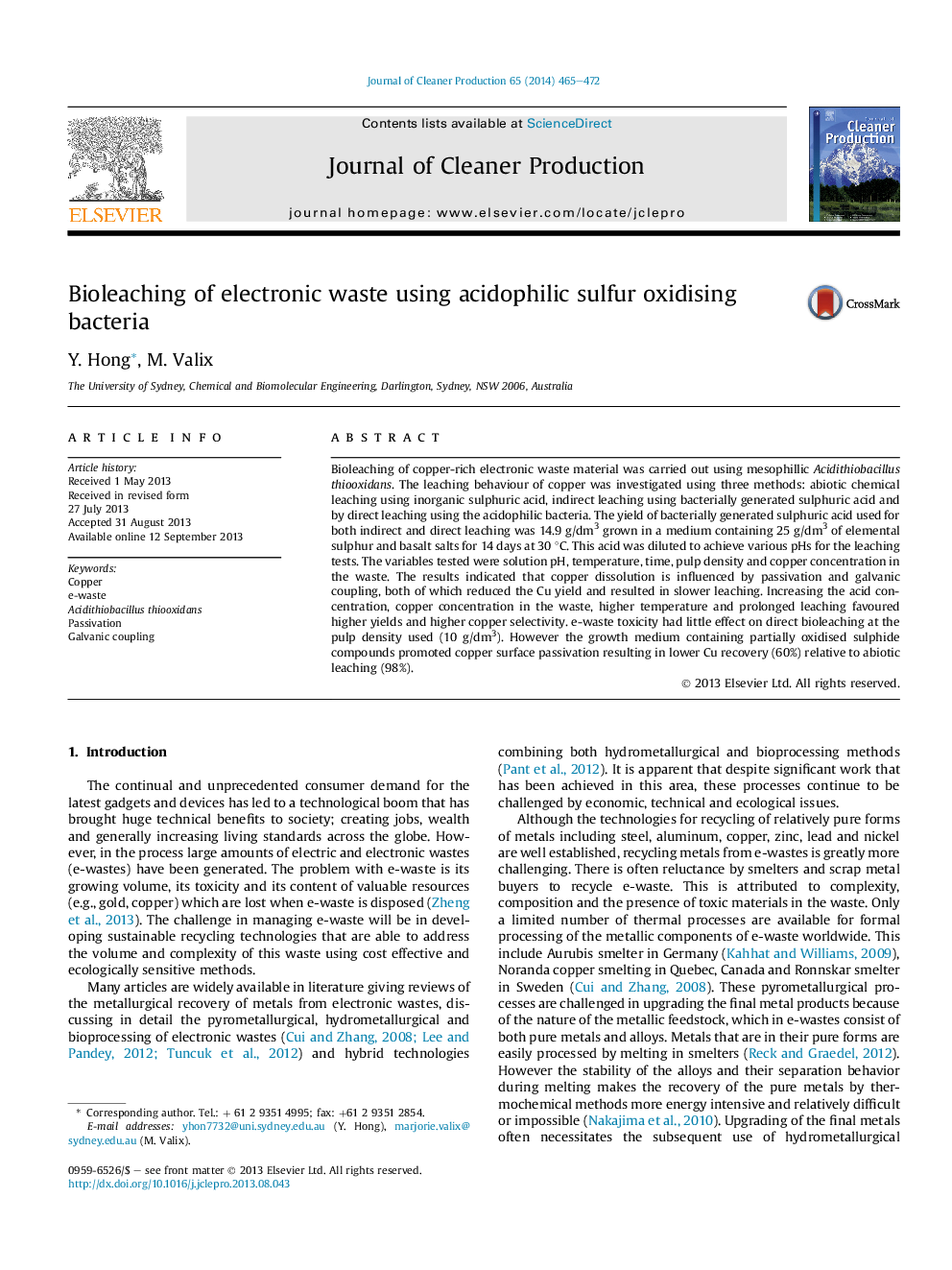| کد مقاله | کد نشریه | سال انتشار | مقاله انگلیسی | نسخه تمام متن |
|---|---|---|---|---|
| 8107061 | 1522181 | 2014 | 8 صفحه PDF | دانلود رایگان |
عنوان انگلیسی مقاله ISI
Bioleaching of electronic waste using acidophilic sulfur oxidising bacteria
ترجمه فارسی عنوان
زباله های الکترونیکی با استفاده از باکتری های اکسیداسیون اسیدوفیلیک گوگرد
دانلود مقاله + سفارش ترجمه
دانلود مقاله ISI انگلیسی
رایگان برای ایرانیان
کلمات کلیدی
موضوعات مرتبط
مهندسی و علوم پایه
مهندسی انرژی
انرژی های تجدید پذیر، توسعه پایدار و محیط زیست
چکیده انگلیسی
Bioleaching of copper-rich electronic waste material was carried out using mesophillic Acidithiobacillus thiooxidans. The leaching behaviour of copper was investigated using three methods: abiotic chemical leaching using inorganic sulphuric acid, indirect leaching using bacterially generated sulphuric acid and by direct leaching using the acidophilic bacteria. The yield of bacterially generated sulphuric acid used for both indirect and direct leaching was 14.9 g/dm3 grown in a medium containing 25 g/dm3 of elemental sulphur and basalt salts for 14 days at 30 °C. This acid was diluted to achieve various pHs for the leaching tests. The variables tested were solution pH, temperature, time, pulp density and copper concentration in the waste. The results indicated that copper dissolution is influenced by passivation and galvanic coupling, both of which reduced the Cu yield and resulted in slower leaching. Increasing the acid concentration, copper concentration in the waste, higher temperature and prolonged leaching favoured higher yields and higher copper selectivity. e-waste toxicity had little effect on direct bioleaching at the pulp density used (10 g/dm3). However the growth medium containing partially oxidised sulphide compounds promoted copper surface passivation resulting in lower Cu recovery (60%) relative to abiotic leaching (98%).
ناشر
Database: Elsevier - ScienceDirect (ساینس دایرکت)
Journal: Journal of Cleaner Production - Volume 65, 15 February 2014, Pages 465-472
Journal: Journal of Cleaner Production - Volume 65, 15 February 2014, Pages 465-472
نویسندگان
Y. Hong, M. Valix,
